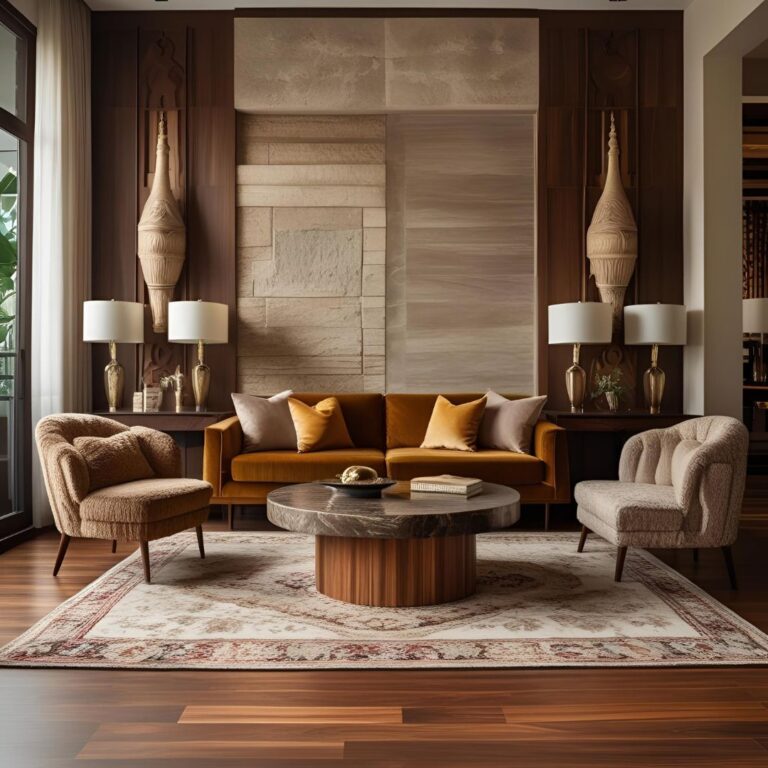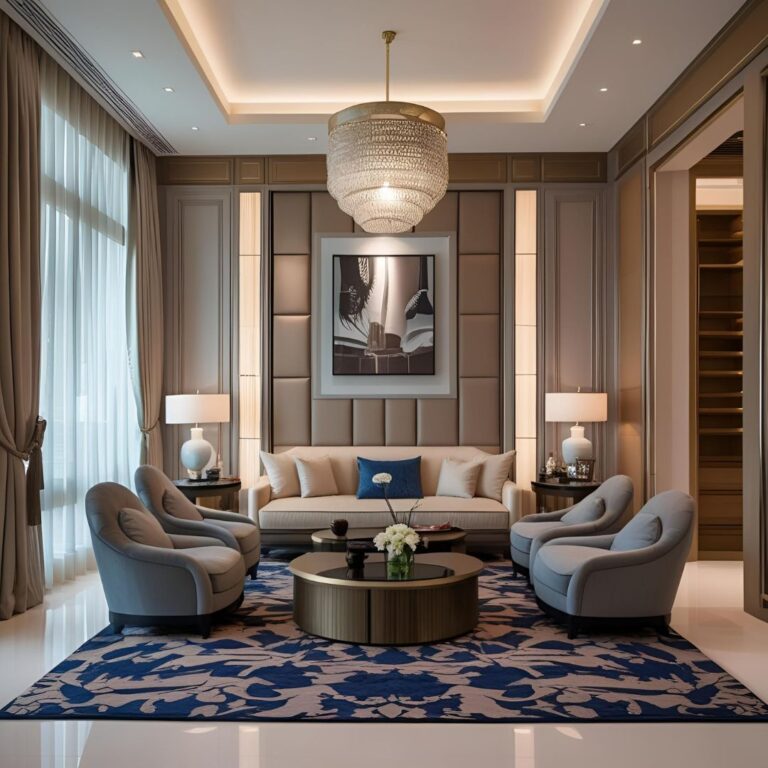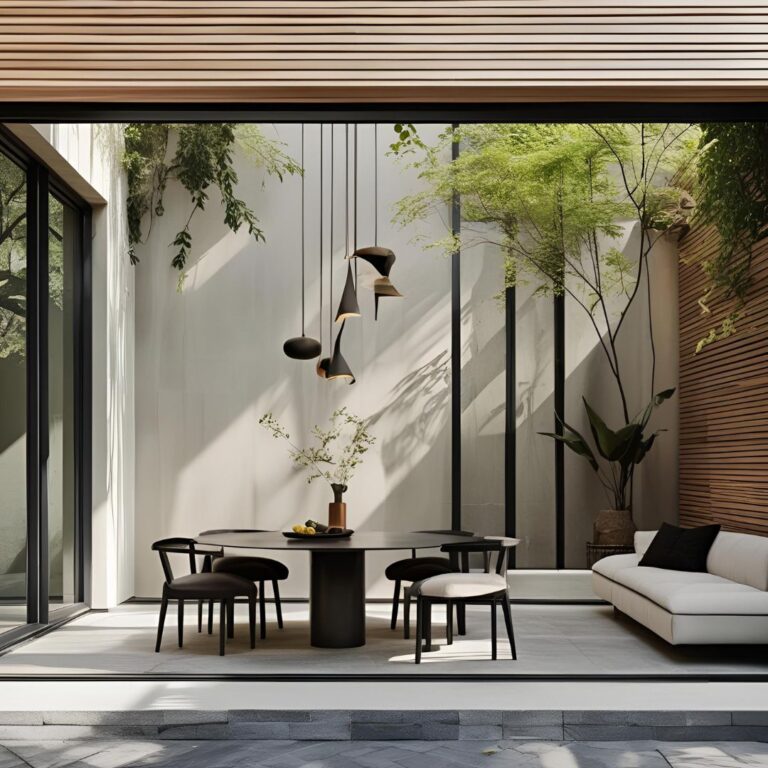The world of luxury interior design is in perpetual motion, a dynamic blend of enduring elegance and evolving aesthetics. As we step further into 2025, the definition of luxury continues to expand, moving beyond mere opulence to embrace concepts like well-being, sustainability, technology integration, and deep personalization. For discerning homeowners and developers, understanding these shifts is key to creating spaces that are not only beautiful but also relevant and resonant.
Here, we delve into the current luxury design landscape, explore what’s gaining prominence and what’s receding, and offer insights from the perspective of experts like Designed Design Associates (DDA) on navigating these trends while maintaining timeless appeal.
Analysis of Current Luxury Design Trends (Leading into 2025): What's IN
Luxury in 2025 is less about loud declarations and more about sophisticated whispers. Here are some key trends taking center stage:
- Sustainable & Conscious Luxury: It’s no longer an option; it’s an expectation. High-end clients are demanding materials that are not only exquisite but also ethically sourced and environmentally friendly. Think reclaimed woods with flawless finishes, recycled metals transformed into sculptural pieces, bio-based materials, and furniture designed for longevity and circularity.
- Wellness Integration: Homes and workspaces are becoming sanctuaries. Design elements that promote physical and mental well-being are paramount. This includes enhanced air and water filtration systems, circadian lighting design, dedicated meditation or yoga spaces, soundproofing, and the abundant use of biophilia (incorporating nature through indoor plants, living walls, or natural views).
- Layered Textures & Rich Palettes: The era of stark, cold minimalism is giving way to warmth and depth. Spaces are layered with varied textures – think boucle, velvet, rich wood grains, natural stone, artisanal plaster finishes, and sumptuous rugs. Colour palettes are becoming richer, moving towards warm neutrals, deep earth tones, forest greens, sophisticated blues, and jewel-toned accents.
- Curated & Bespoke Elements: Mass-produced luxury feels less authentic. Clients crave unique pieces that tell a story. This trend emphasizes custom-designed furniture, commissioned art, artisanal crafts, and built-in elements tailored precisely to the space and the client’s needs.
- Subtle Technology Integration: Technology should enhance life seamlessly, not dominate it. Smart home systems are becoming more intuitive and hidden. Think integrated lighting controls that adjust with natural light, hidden speakers delivering high-fidelity audio, and automated climate systems that learn your preferences – all controlled via minimalist interfaces or voice.
- Curves and Soft Forms: A move away from sharp, rigid lines towards softer, more organic shapes in furniture, architecture, and decorative elements. Arched doorways, curved sofas, rounded edges on tables – these create a sense of gentle flow and comfort.
What's Out (or Evolving):
Certain approaches are becoming less prevalent in the leading edge of luxury design:
- Overly Themed or Generic Luxury: Spaces that feel like a hotel lobby or strictly adhere to a fleeting trend without reflecting the owner’s personality.
- Cold, All-Grey Palettes: While grey remains a versatile neutral, monochromatic schemes lacking warmth, texture, or depth are less favoured.
- Obvious, Clunky Tech: Visible wires, bulky gadgets, or complex interfaces that detract from the aesthetic and user experience.
- Fast Furniture in Luxury Spaces: Items chosen purely for temporary style rather than quality, craftsmanship, and sustainability.
- Excessive, Uninspired Bling: Gold for the sake of gold, glitter, or overly shiny surfaces without thoughtful application or balance.
Insights on How DDA Incorporates Trends While Maintaining Timeless Appeal
Navigating the ebb and flow of trends is where the expertise of a firm like DDA shines. For DDA, trends are not commandments but rather inspirations – elements to be considered, filtered, and potentially integrated if they align with the core principles of timeless design and, crucially, the client’s unique vision.
The cornerstone of DDA’s approach remains the in-depth client personality study. This process ensures that any incorporated trend serves to enhance the personalized narrative of the space, rather than overshadowing it. For example, while biophilia is ‘in,’ DDA won’t just add plants randomly; they will understand how the client interacts with nature and design integrated green spaces or select specific plant species that resonate personally and thrive in the environment.
DDA’s signature style – bold yet understated, modern, and contemporary – acts as a natural filter. The emphasis on high-quality materials and bespoke craftsmanship means that even trending elements, like a specific texture or a curved furniture piece, are executed with an enduring quality that transcends the temporary nature of the trend itself. They might use a trending colour but apply it in a sophisticated, layered way that provides depth rather than just a superficial coat. The ‘understated’ aspect ensures that while elements are bold, they don’t create a space that will feel dated next year.
By focusing on foundational principles – functionality, flow, light, proportion, and quality materials – DDA ensures that the ‘bones’ of the design are timeless. Trends are then woven in as refined details and layers that add contemporary relevance and personality, ensuring the space feels current and personal without sacrificing its long-term appeal.
Expert Predictions for Upcoming Design Movements
Looking ahead, experts predict several movements will gain further momentum:
- Hyper-Personalization & Data-Driven Design (Ethically Applied): Leveraging data about client preferences and habits (with consent) to create even more intuitively personalized and responsive environments.
- Circular Design & Regenerative Materials: An even stronger focus on materials that can be recycled, upcycled, or are regenerative, minimizing waste throughout the lifecycle of the design.
- Adaptive & Multi-functional Spaces: As living and working patterns continue to evolve, spaces that can effortlessly transform to serve multiple purposes will become increasingly sophisticated and integrated.
- Emphasis on Sensory Design: Beyond visual appeal, design will increasingly focus on how spaces sound, smell, and feel, creating truly immersive environments.
- Blurring Indoor/Outdoor Boundaries: More seamless transitions and integrated design between internal living areas and external landscapes or balconies.
In 2025, luxury interior design is an intelligent, conscious, and deeply personal endeavour. It’s about creating environments that not only look spectacular but also feel right, function flawlessly, and contribute positively to the well-being of those who inhabit them. For firms like DDA, the challenge and the triumph lie in harnessing the energy of current and future trends to craft spaces of enduring beauty and profound personal resonance.



